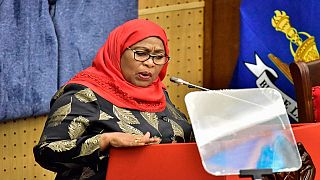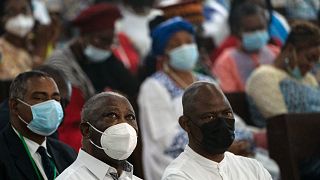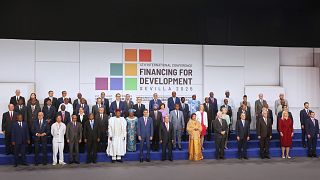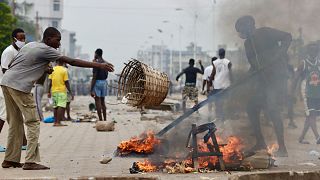Ivory Coast
"We have no water", says the head of the Ayamé hydroelectric dam (South) helplessly: in Côte d'Ivoire, it is necessary to wait for the rainy season to put an end to some of the untimely power cuts that have shaken the country since April.
The southeast of Côte d'Ivoire is home to two major hydroelectric dams located in Ayamé, near Aboisso, which are almost dry, and the heavy rains expected from June onwards are the only hope for a rise in water levels.
"It hardly rains at all, the water level has dropped by five meters, the first time this has happened in more than a decade," Ladji Koné Vacaba, the director of the Ayamé site, told AFP.
"We are going through a period of drought which affects all the dams in the country: Kossou, Taabo, Soubré and Buyo. Water is the raw material of the dam; without water, we cannot produce electricity. We are limited by natural phenomena," he notes.
In Ayamé, one can see the distressing spectacle of a dam in a recession that lets muddy water emerge from which large stones come out where birds come to rest.
Downstream from the Bia River, with its low laterite-colored waters, dried-out trees without any foliage stand out of the water.
Despite the drop in the level of the river that irrigates the dam, fishermen in dugout canoes venture out to cast their nets in the hope of catching a few fish.
Ivorian electricity production, the largest in West Africa, is 75% thermal, with the remainder provided by hydroelectric dams.
"Rationing"
A breakdown in April at the Azito thermal power plant in Abidjan, which generates a third of the country's electricity, caused major power cuts, incurring the wrath of industrialists and consumers.
To cope with this, "we have maximized hydroelectric production while the water level in the dams has dropped," explained the Minister of Mines, Oil and Energy, Thomas Camara.
But according to him, "the situation is much better than before" the start of the blackouts in April. "At night, there is no longer any rationing, nor is there any rationing at weekends," he said, while during the week households are rationed six hours a day, with industrialists being supplied "for 16 hours every other day.
He prefers to speak of "power rationing" rather than "load shedding". "We do not have an energy deficit because the installed capacity of 2,300 megawatts is far greater than the peak consumption of 1,600 megawatts, which is equivalent to the national demand," Camara said.
According to him, "the rainy season is coming, the water level will recover and we will have all our capacities available to cover the demand. By mid-July we will be out of this rationing situation for good," he assured.
The president of the Confederation of Consumers of Côte d'Ivoire (COC-CI), Jean-Baptiste Koffi, deplores the unofficial rationing which "puts consumers in difficulty". He says that artisans or restaurateurs "suffer an operating loss of about 50% due to power cuts.
"Monopoly
The Ivorian Electricity Company (CIE), privatized in 1990 and owned by Eranove, holds a monopoly on the operation of the system of production, transport, distribution of electricity, as well as its marketing.
In 2020, the company exported 11 percent of its electricity production to six neighboring countries - Ghana, Togo, Benin, Burkina, Mali and Liberia - according to the Ministry of Energy.
CIE has already faced a customer revolt, as its tariff increases generated social conflicts in 2016.
"Where there is a monopoly, the consumer never finds his account. We condemn this monopoly and call for the opening of the market so that the right to consumer choice is guaranteed," said the boss of Ivorian consumers.
First economic power in French-speaking West Africa, Côte d'Ivoire currently has a network of 5,000 km of high voltage lines and an installed capacity of 2,300 megawatts.
The government is betting on a program to develop its network and aims to reach the 6,600 MW mark in 2030, and to make renewable energies contribute to the energy mix up to 16%.
AFP











01:30
Ivory Coast opposition call for election reform ahead of vote
00:31
Mauritanian economist elected African Development Bank president
01:02
Tidjane Thiam Confirmed as PDCI President by Ivorian Court
Go to video
Tidjane Thiam plans return as Ivory Coast's opposition PDCI party leader
Go to video
Pix of the Day: May 6, 2025
Go to video
The second edition of Abidjan Art Week comes to a close